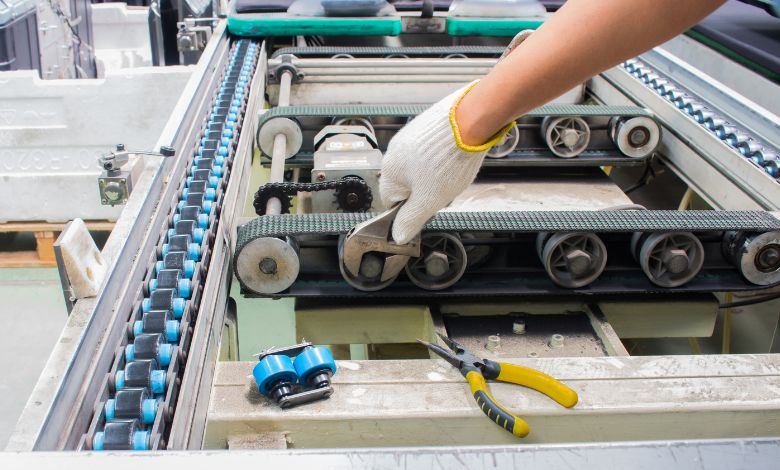
How To Fix Common Conveyor Belt Tracking Issues
Conveyor belts are essential to the efficient functioning of many industries, from manufacturing to supply chain management. However, one challenge that frequently plagues conveyor belt users is the issue of belt tracking. Let’s explore how to fix common conveyor belt tracking issues and help you get your system back on track.
Identifying the Causes of Belt Tracking Issues
Before diving into fixes, you must understand the potential causes of conveyor belt tracking issues. Some common reasons include:
- Poor belt tension: Incorrect tension can lead to slippage and misalignment.
- Damaged or worn pulleys: Over time, pulleys can become damaged or worn, causing belts to veer off course.
- Accumulation of debris: Dirt and debris can build up on the conveyor system, leading to tracking problems.
- Uneven load distribution: If the load on the conveyor belt is uneven, it can contribute to tracking issues.
Adjusting Belt Tension
When you understand why proper conveyor belt tension is important, you’ll be more mindful in maintaining this critical factor of your conveyor system. To adjust belt tension, follow these steps:
- Turn off the conveyor system and lock out the power source.
- Loosen the tensioning device (typically a set of bolts or screws).
- Adjust the tension until it’s even and consistent along the entire belt length.
- Tighten the tensioning device and test the system for proper tracking.
Inspecting and Replacing Pulleys and Rollers
A common culprit of conveyor belt tracking issues is worn or damaged pulleys and rollers. To fix this issue, do the following:
- Turn off the conveyor system and lock out the power source.
- Inspect the pulleys and rollers for wear, damage, or debris buildup.
- Clean or replace any problematic components as needed.
- Ensure proper alignment in the pulleys and rollers.
Cleaning the System
Debris buildup can contribute to conveyor belt tracking problems. You can deal with it using these actions:
- Turn off the conveyor system and lock out the power source.
- Remove any visible debris from the belt, rollers, and pulleys.
- Use a soft brush or cloth to clean these components gently (avoid using harsh chemicals or abrasive cleaning materials).
- Regularly schedule system cleanings to prevent future buildup that can lead to tracking issues.
Addressing Uneven Load Distribution
To fix tracking issues that uneven load distribution has caused, carry out these steps:
- Evaluate the materials and products transported on the conveyor belt. Are they prone to shifting during transit?
- If necessary, adjust the conveyor system to accommodate uneven loads better, such as by slowing down the speed or using belt guides and side skirts.
- Train operators and loaders on proper loading techniques to minimize uneven load distribution.
Now that you know how to fix common conveyor belt tracking issues, preventative maintenance and addressing problems as they arise will ensure your conveyor system remains efficient and reliable. By following these steps, you can keep your conveyor belts on track and reduce downtime due to misalignment and other related issues. Don’t let tracking problems hold your business back. Take action today to resolve these issues and improve your system’s performance.



